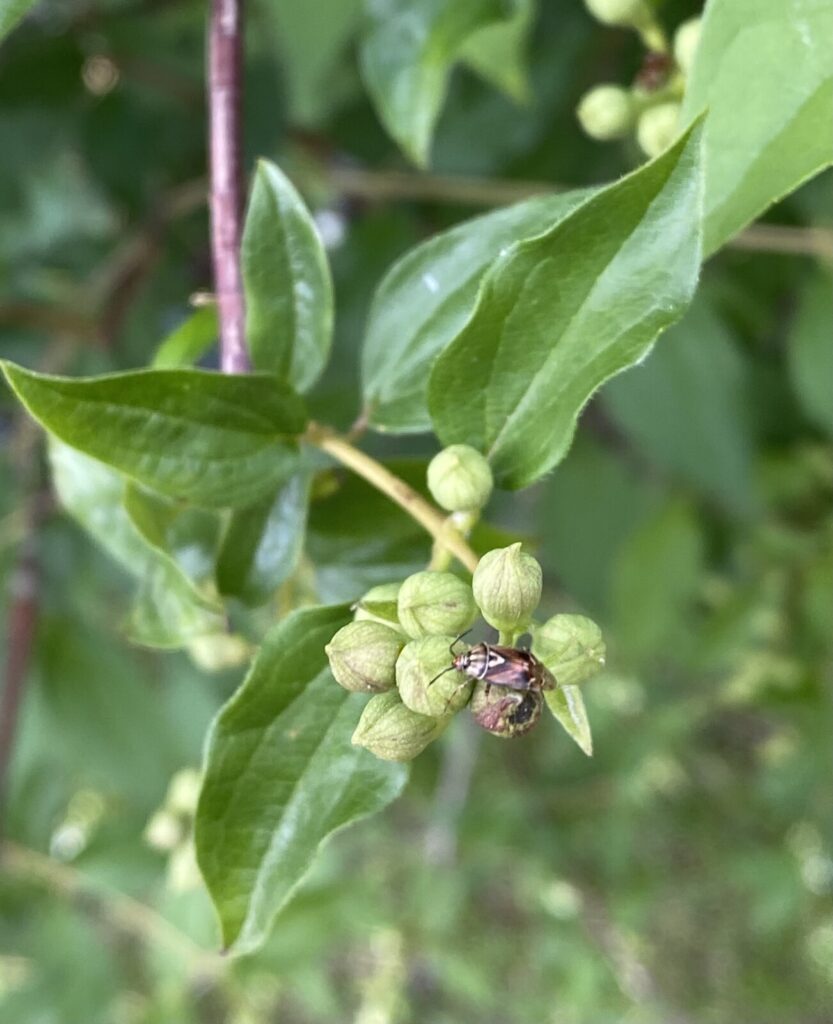
It seems that almost everybody has a certain pest infesting their gardens already this year… the pesky lygus bug. It appears we are experiencing what some may call a “Lygus Bug Apocalypse,” like the one that damaged many Albertan canola crops in 2021.
The Western Tarnished Plant Bug, or more commonly known as Lygus bug is a small oval shaped flying insect that causes damage to plants when feeding in both it’s nymph and adult stages. They come in a variation of colors, most notably brown and green with a small white downwards triangle on their back. They damage the plant with their piercing-sucking mouth parts, preferring the sap of new growth and the reproductive tissues. Many plants are susceptible to these pests; however, they have a preference for canola, potatoes, strawberries, vegetable crops and fruit trees.

Eggs are laid on plants in early spring by adults that have overwintered. Eggs hatch into the first stage of nymph, called the 1st instar nymph. As the nymph feeds on the plant, it was born on, it will grow into the next 5 stages of instar nymphs. It’s hard to give a timeline as to how long these stages take, as many environmental factors play a part in the lygus bug lifecycle. It is important to note that only adult bugs can fly, so if you catch the nymphs early it lessens the chance of them damaging other plants in your yard! It is possible we may experience another “generation” of lygus bugs later this season as an extra generation is possible when an early spring and late fall occur. This is because lygus bugs emerge early in the spring, feed and begin to reproduce on the host plant and if not treated, the eggs will hatch, nymphs will appear, turn into adults, then repeat this cycle if the weather and time permits. Therefore, it is important to treat all plants you are noticing them on!
The answer to this is simple: the very hot and dry weather. Heat speeds lygus growth. Heat will impact the pace of lygus development. Therefore, many days with high temperatures and no rain in May and early June allowed lygus bugs to develop quicker than in previous years.
We have a couple options available in store to rid your yard of these pests. Pyrethrin is the most effective ingredient you will want to look for. Some pyrethrin based pesticides we would recommend are:
For veggie gardens and other edibles we recommend:
While lygus bugs seem so prominent this year, we may see hardly any next year. It seems that every year brings a new challenging bug to our gardens. Hot dry weather brings chinch, lygus, and aphids. Rainy, cooler temperatures bring slugs, mosquitoes, and dew worms that can wreck your lawn. So, is there any winning? Pests are just one of the many parts of the gardening experience, and luckily, there are usually a couple options to help you in your gardening battles. You are always welcome to contact us by phone, email, and to come into the store with any questions regarding pests and measures to help rid your garden of them!

We are Cochrane & West Calgary’s largest Garden Center, owned-and-operated by plant-loving locals. We’re glad you’re here. You can visit us 7 days a week in store, or online. Get Directions
Get free gardening resources, monthly coupons, and new arrival alerts, straight to your inbox.
Join Now